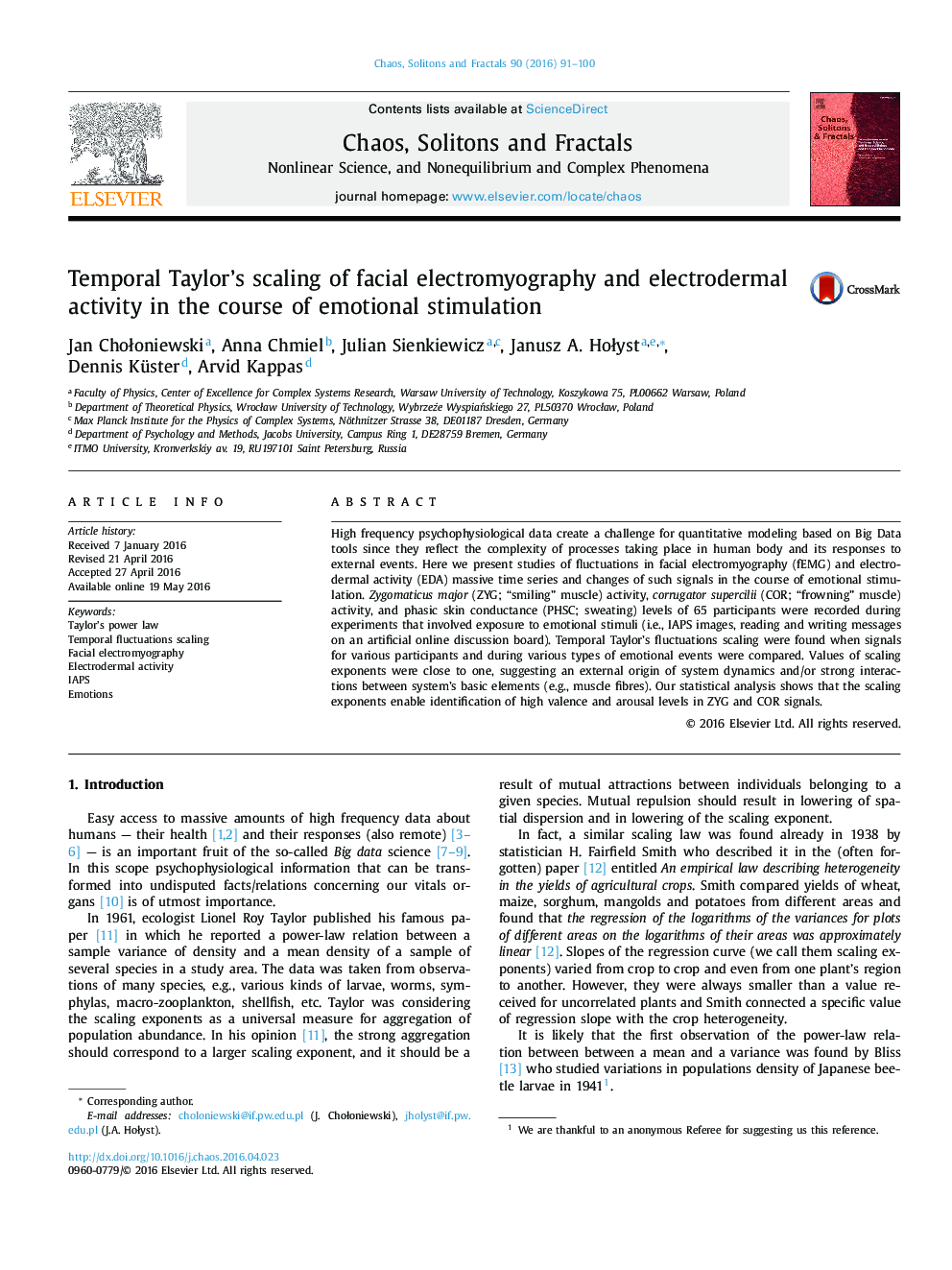| Article ID | Journal | Published Year | Pages | File Type |
|---|---|---|---|---|
| 1891066 | Chaos, Solitons & Fractals | 2016 | 10 Pages |
•Taylor’s fluctuations scaling were observed in signals of human emotional systems.•fEMG and EDA signals exhibit power law for temporal fluctuation scaling.•Values of scaling exponents suggest mainly external source of fluctuations.•There are differences between exponents calculated for specific emotions.
High frequency psychophysiological data create a challenge for quantitative modeling based on Big Data tools since they reflect the complexity of processes taking place in human body and its responses to external events. Here we present studies of fluctuations in facial electromyography (fEMG) and electrodermal activity (EDA) massive time series and changes of such signals in the course of emotional stimulation. Zygomaticus major (ZYG; “smiling” muscle) activity, corrugator supercilii (COR; “frowning” muscle) activity, and phasic skin conductance (PHSC; sweating) levels of 65 participants were recorded during experiments that involved exposure to emotional stimuli (i.e., IAPS images, reading and writing messages on an artificial online discussion board). Temporal Taylor’s fluctuations scaling were found when signals for various participants and during various types of emotional events were compared. Values of scaling exponents were close to one, suggesting an external origin of system dynamics and/or strong interactions between system’s basic elements (e.g., muscle fibres). Our statistical analysis shows that the scaling exponents enable identification of high valence and arousal levels in ZYG and COR signals.
